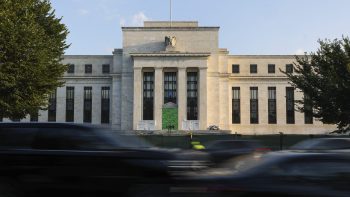Will the Fed begin phasing out its economic stimulus program?
Will the Fed begin phasing out its economic stimulus program?
Next week the Federal Reserve’s Open Market Committee is meeting, and they may well discuss slowing down or “tapering” what’s known as quantitative easing — that’s where the Fed buys up assets to push money into the financial system.
How will investors react? It comes down to communication and confidence. First a little background: One way quantitative easing works is for the Fed to buy up so many bonds, for example, that the prices go up and the yield shrinks. The idea is that then investors will look other places to park their money which hopefully helps the economy.
Adolfo Laurenti, deputy chief economist at Mesirow Financial, explains it this way: “The goal of quantitative easing at this point is really to try to mobilize capital, to have investors buy into riskier assets that have a more direct impact on the economy.”
But what if the Fed starts tapering off quantitative easing? Would investors stop investing where it most helps the economy? That’s the worry in some quarters — that it might spook the stock market. That’s where communication comes in, says Mark Spindel, founder of Potomac River Capital.
“The challenge is to remind people there’s a big difference between the accelerator and the break,” he says.
Tapering off asset purchases under Quantitative Easing is very different from, say, raising interest rates. So the Fed is going to try to be very clear that it’s moving gently, hence “taper” and not “cold turkey”. The other half of the equation is instilling confidence in the economy.
“The best way to do that,” says Jim Paulsen, chief investment strategist with Wells Capital Management, “is to show some themselves!”
One way to do that, ironically, is to slow down quantitative easing, Paulsen argues. An end to such unconventional policy should signal that things are getting better, which Paulsen says they are. Unemployment is falling, and job creation has been averaging around $200,000 per month.
“You got the housing industry working again, home prices rising again, household networth back to record highs, household debt service to record lows,” he says. All of this will be enough to fuel the market once quantitative easing begins to taper.
Ideally, investors will keep investing because they want to, not because the Fed’s quantitative easing is pushing them to. Ideally.
There’s a lot happening in the world. Through it all, Marketplace is here for you.
You rely on Marketplace to break down the world’s events and tell you how it affects you in a fact-based, approachable way. We rely on your financial support to keep making that possible.
Your donation today powers the independent journalism that you rely on. For just $5/month, you can help sustain Marketplace so we can keep reporting on the things that matter to you.


















